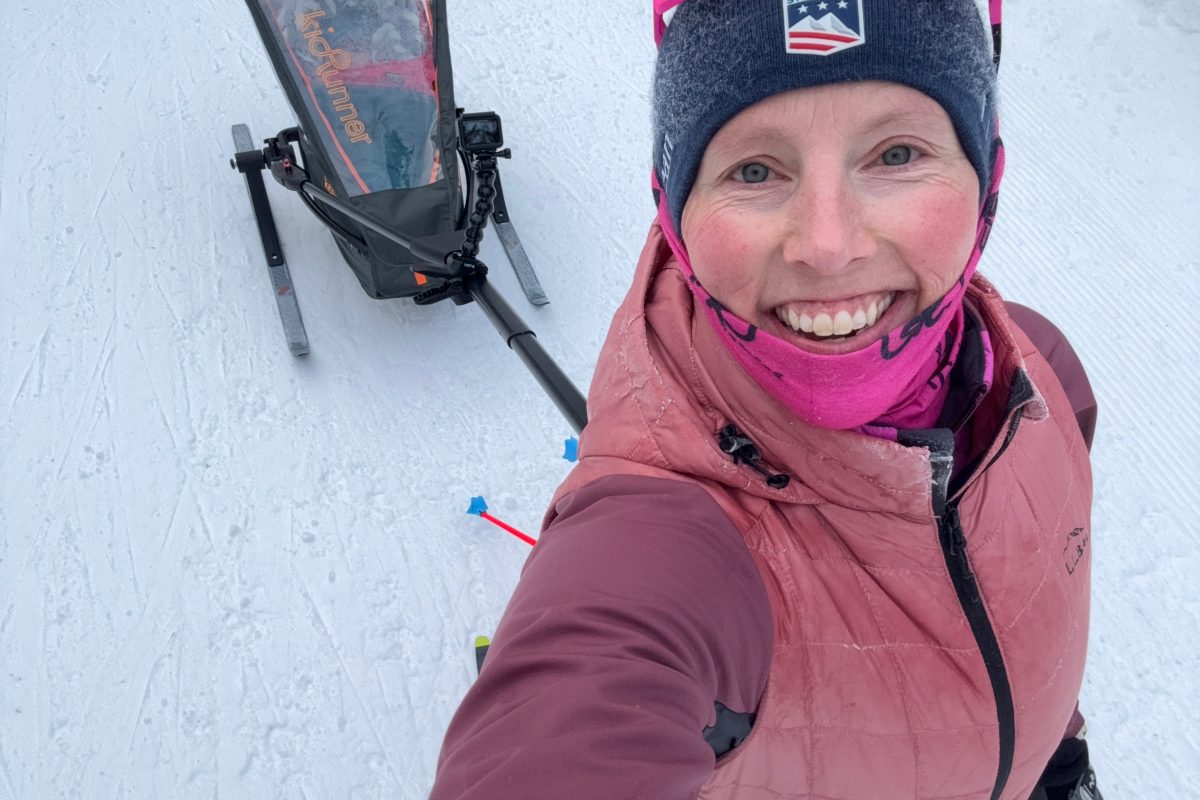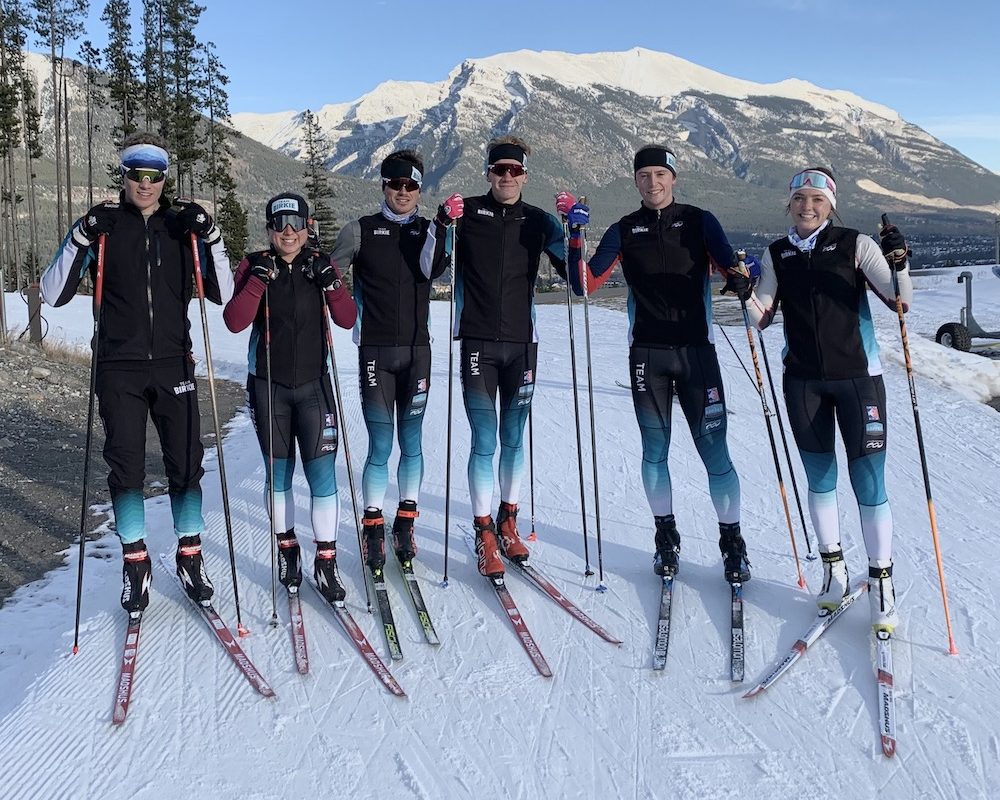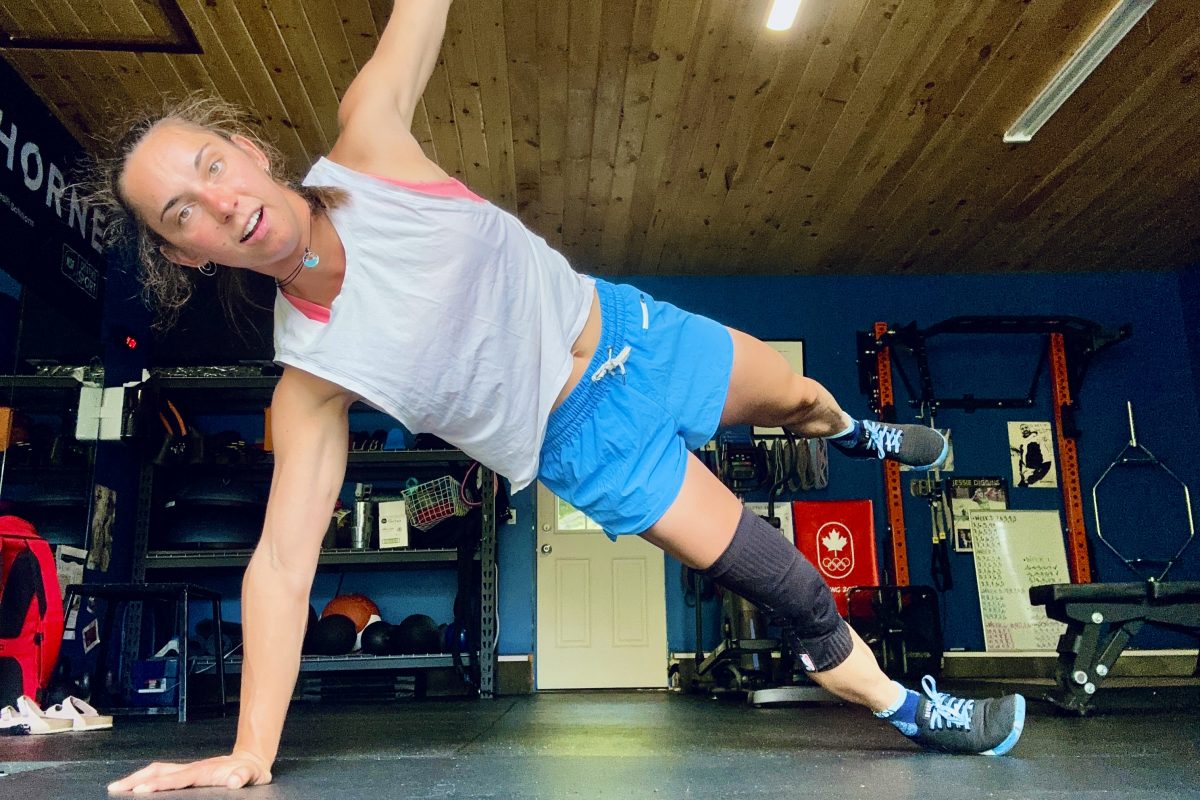
It’s safe to say the Canadian cross-country teams enjoyed their stay in Park City, Utah. Between their tweets and Instagrams of bluebird days and college football games, it’s not hard to see why.
While the Canadian women headed south on Saturday for a few days of training in St. George, Utah, the men’s World Cup team and senior-development skiers remained at a higher altitude at Park City during their second week of camp. On Tuesday, the men flew back to Canmore, Alberta, where they would likely get on snow at Frozen Thunder by the end of the week.
In all, six women and 10 men participated in the Canadian National Ski Team’s final dryland camp of the season. Women’s World Cup team members Perianne Jones, Chandra Crawford and Dasha Gaiazova trained with development and Alberta World Cup Academy (AWCA) athletes Alysson Marshall and Emily Nishikawa, and Amanda Ammar (independent). The men’s World Cup team (Devon Kershaw, Alex Harvey, Ivan Babikov and Lenny Valjas) did every workout with the development/AWCA skiers: Graham Nishikawa, Kevin Sandau, Jess Cockney, Graeme Killick, Michael Somppi, and Brent McMurtry.

“The camp overall has been amazing,” Nishikawa wrote in an email. “The weather has great – bluebird everyday and not too hot. The camp was super smooth … and the energy was always high.”
One of his highlights was going to see the University of Utah football host the University of Southern California Trojans last week.
“It was the first college football experience for all of us and it did not disappoint,” Nishikawa wrote. “People get into it. Go Utes.” (The Utes lost 38-28.)
On Sunday, the men’s team celebrated Canadian Thanksgiving with dinner at the hotel. The next day, they ascended 1,600 meters (5,250 feet) on a four-hour rollerski up Mirror Lake Highway east of Park City, reaching 3,300 meters (11,000 feet) above sea level.
Head coach Justin Wadsworth wasn’t able to make it to the workout; he had to fly to Calgary on Sunday after his father-in-law fell and went to the hospital. He was stable and recovering, Wadsworth said Monday, after taking his kids to see their grandfather in the hospital before heading back to the airport.
“I’m taking the kids to Oregon just for a little seven-day break,” he explained.
While his two youngsters meowed “London Bridge” in the backseat, Wadsworth reflected on the Park City camp.
“We’ve done this camp now three years in a row and this one was great,” he said.
***
FasterSkier: What were some of the highlights of training around Park City?
Justin Wadsworth: We did some new routes for some long workouts and revisited probably one of the most challenging workouts, which is the back way from Soldier Hollow up to Deer Valley [in Park City]. They used it in the Tour of Utah cycling race, and I think a few of the pro cyclists who have ridden extensively on the circuits in Europe said it was the toughest climb they’ve ever done. We did it on rollerskis last year and then they repaved it this year so it was a bit better. It’s an amazing workout. The climb [up Guardsman Pass] is from about 1,600 meters and then they go out to about 2,800 meters … and we did it skating this year just to keep the emphasis on steep uphill skating.
I think that’s still, as a team, an area where we need to keep improving. Steep uphills are where everybody in the world have a hard time so I think it’s just good to be really efficient at climbing.

FS: What were some of the objectives for this camp?
JW: It was a volume camp. Just being at altitude was the main goal, and getting through a lot of the workouts and not coming out of this camp too tired. [We wanted] a lot of the athletes to go easy on the longer workouts and be fresh coming out of this camp so we can really train well the next three weeks before we go to Europe.
FS: Were there many joint sessions with other teams?
JW: There were a couple intensity workouts where we were joined by a bunch of our biathletes and I think [one or two of the American women]. We had a group of 13-14 women for some of the interval sessions.
FS: What about with the men? Was U.S. Ski Team member Noah Hoffman the only one that hopped in some workouts?
JW: Yeah. We would’ve enjoyed having the other guys around, but he was the one that was in town and ready to train at altitude.
FS: How was your men’s training group with the AWCA and development-team skiers?
JW: That worked out really well. We try to get our development-team guys exposure to our World Cup team as much as we can, and I think as a development group they’re in a pretty good place. They’re strong and fit. It’s really good when you have athletes like Devon, Alex, Ivan and Lenny that are proven world’s-best on any day. It’s always good to have your development-team guys have a marker like that, like, ‘OK, if you’re going to get Devon in this interval workout, you can probably bet he’s top-five in the world that day for his fitness,’ so it’s really good to see how they compared and stacked up against the World Cup team guys.
FS: How is everyone health-wise?
JW: Everyone’s doing really well. Ivan had a little bit of an ankle problem. It’s quite strange it wasn’t an acute injury so he had a couple days where he couldn’t classic ski. But besides that, I would say everyone was doing extremely well. I’m pretty happy where the team is and the same on the women’s side. The women looked great, and I really saw a remarkable change in actually all three of the World Cup women. I think they’re doing great.
FS: Was that your first time really observing or working with the women this season?
JW: [After] we split the [men’s and women’s] teams this year, we’ve been at a lot of different camps so it’s been hard to see them. I’ve been at a few workouts where it’s just been Peri and stuff, but to see the women all together and especially with Dasha in that group as well. … It’s good to see that everything’s been going really well with that program and [women’s coach] Eric [de Nys] is doing a really good job.
FS: How and when do you use V02max or similar tests to measure progress?
JW: For the women’s team, they’ve been testing periodically through the summer and we’ve continued with them just like we did last year as well. We’ve been trying some different strategies with the women, so we do want to monitor what changes are happening to their physiology, so that’s been going on and I believe they have one more set of testing before they go to Europe.
With they guys, we haven’t been doing any testing at all. We haven’t really changed our training philosophy that much, and I’m pretty confident through other ways, intervals that we measure and whatnot, that everything’s going well. Testing, for me, you really need to garner something out of it and to make it worthwhile. I think a lot of people test just for the sake of testing and I think for our women, we have been trying some new training methods with them and we do want to see what changes are happening, but with the guys it’s pretty stable.
At the workouts I’ve been to [with the women], you can see the changes. When you can actually notice the changes it’s pretty exciting, but it’s good to back it up with numbers just to make sure we’re seeing what we want to see with them.

FS: Park City marked the first joint camp between your men’s and women’s teams this year. What did you do together and how did that go?
JW: We had a bunch of dinners together, which was really good, and interval sessions, we kind of crossed paths; we did the women first one day and the men second just because the groups were so big.
It’s always amazing, this team, they interact super well and they’re all really close. It’s fun to get everybody together again and it was a good check up. We all had a team meeting with our sports psychologist, too, during the camp and just made sure everyone has the same goals in mind as far as working as a team professionally.
I think having that team meeting and having the team together for a few meals was really important and it showed everybody that we all are on the same page. It’s really important to have that team dynamic. It’s easy when you’re tired and stuff to get a little lazy with making sure you’re being a good teammate and being respectful, so it’s always good for coaches and athletes to be reminded of that.
FS: What’s the plan for training in Canmore at Frozen Thunder?
JW: They roll out Frozen Thunder on [October] 13th I believe. We’ll be on snow pretty quickly and … just skiing quite a bit. With Frozen Thunder, you don’t want to go too nuts on it because it is only a couple k’s [about two] so you can kind of get burned out on it, but the goal is definitely to just do some of the easy shorter, distance workouts on there and then do a lot of the intensity workouts there and then we’ll still rollerski a lot. You don’t want to crank out a three-hour workout at Frozen Thunder, it’s just too repetitive.
FS: And you’ll see the U.S. Ski Team there again, too?
JW: The U.S. will be joining us so that will be fun. We’re having a classic sprint race on Friday the 26th of October so that’ll be a full-blown, timed, bibbed event so it should be quite competitive. In North America, we have ten of the world’s best sprinters roughly, so it’s pretty exciting to get everybody together – our guys and Simi and Newell and Kikkan and Chandra – it’s just a really competitive field for sprinting so it should be a fun race to see.
Alex Kochon
Alex Kochon (alexkochon@gmail.com) is a former FasterSkier editor and roving reporter who never really lost touch with the nordic scene. A freelance writer, editor, and outdoor-loving mom of two, she lives in northeastern New York and enjoys adventuring in the Adirondacks. She shares her passion for sports and recreation as the co-founder of "Ride On! Mountain Bike Trail Guide" and a sales and content contributor at Curated.com. When she's not skiing or chasing her kids around, Alex assists authors as a production and marketing coordinator for iPub Global Connection.



